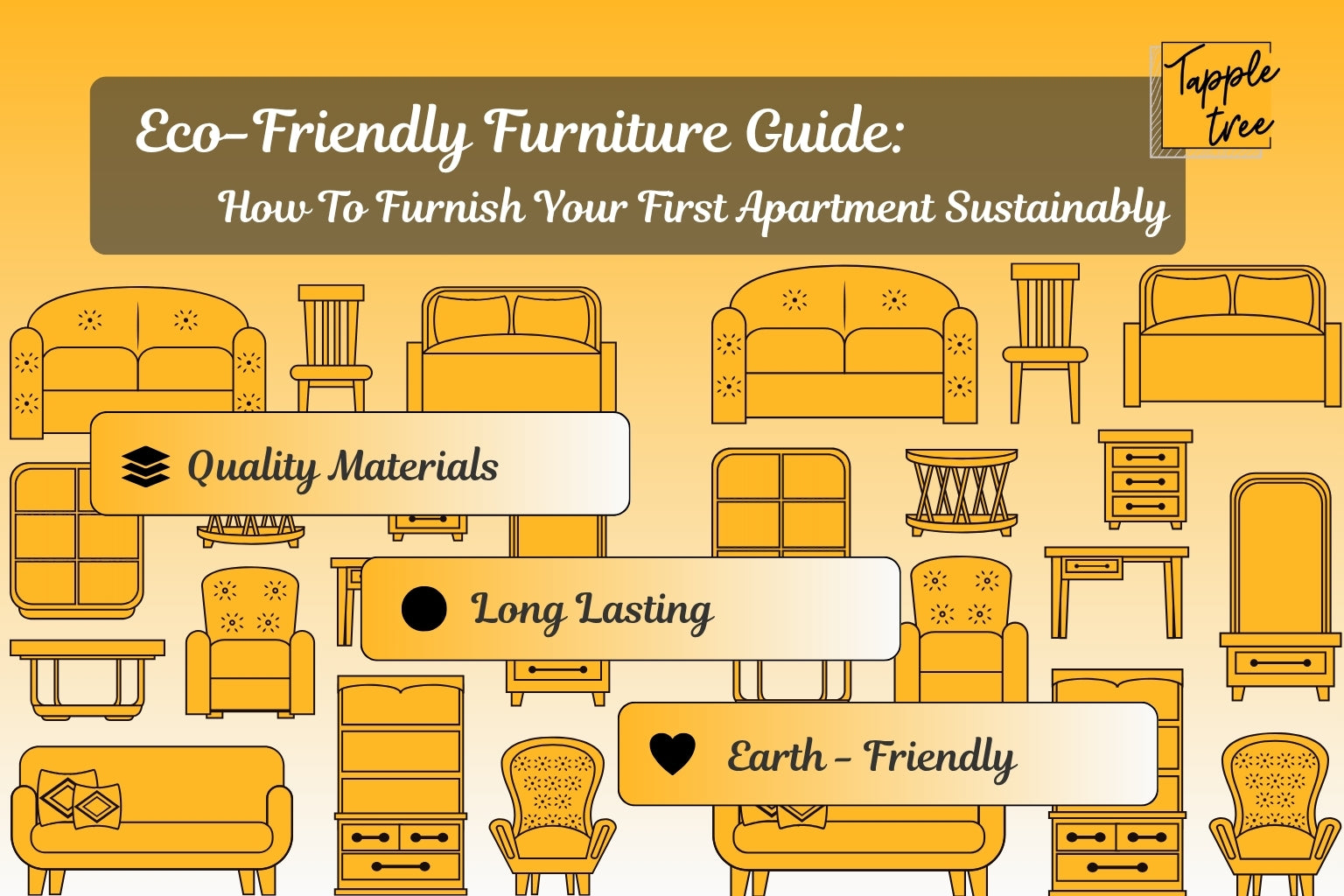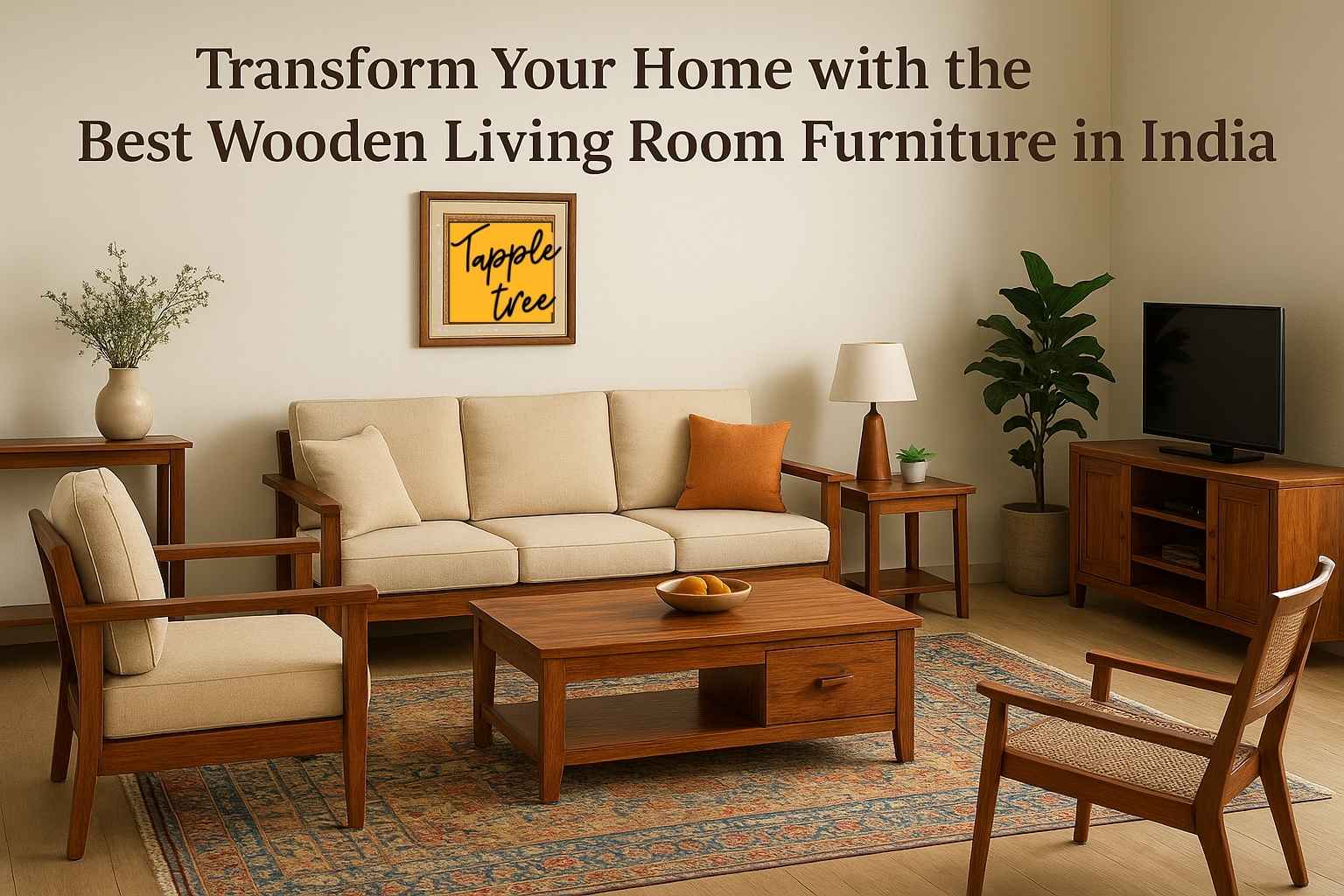Moving into your first apartment is an exciting milestone, but it also comes with an important question: how do you create a beautiful home without compromising your values? If sustainability matters to you, the good news is that furnishing your space eco-consciously doesn't mean sacrificing style or comfort.
This guide will help you make smart, sustainable choices that benefit both the planet and your wallet, creating a home you'll love for years to come.
Why Sustainable Furniture Matters
The furniture industry has a hidden environmental cost. Fast furniture—cheap, trendy pieces designed to last just a few years—contributes millions of tons of waste to landfills annually. Beyond disposal, conventional furniture manufacturing involves toxic chemicals, unsustainable materials, and processes that harm both the environment and your indoor air quality.
Choosing sustainable furniture means investing in pieces built to last, made from responsibly sourced materials, and crafted with minimal environmental impact. It's a decision that pays off in durability, health benefits, and long-term savings.
What Makes Furniture Eco-Friendly?
Before shopping, understand what actually makes furniture sustainable:
Sustainable Materials: Look for solid wood with FSC or PEFC certification, reclaimed wood, bamboo, recycled metal, or natural fabrics like organic cotton and linen. Avoid particle board with formaldehyde-based adhesives.
Non-Toxic Finishes: Choose pieces finished with low-VOC or zero-VOC paints and stains. Natural oil finishes and water-based treatments are excellent indicators of quality.
Quality Craftsmanship: Handcrafted furniture with traditional joinery techniques will outlast mass-produced pieces. Quality construction means your furniture can be repaired rather than replaced.
Ethical Manufacturing: Look for brands that manufacture locally, maintain fair labor practices, and are transparent about their supply chain.
Essential Pieces: Where to Invest First
The Bedroom
Your bedroom should be a healthy sanctuary, making it the perfect place to prioritize sustainable choices.
Start with a quality bed frame that combines style and function. Storage beds are brilliant for small apartments, eliminating the need for extra furniture while maximizing space. Look for solid wood frames or eco-friendly upholstery in organic cotton or linen. A lift-up storage platform bed provides comfortable sleep while hiding seasonal clothing and extra bedding—perfect for keeping your space clutter-free.
Invest in an organic mattress free from flame retardants and petrochemicals. Natural latex, organic cotton, and wool options offer both comfort and health benefits.
The Living Room
This is where you'll spend most of your time, so comfort and durability are essential.
Invest in quality seating with solid wood frames and natural fiber cushioning. A well-made chair in durable vegan leather or natural fabric can serve you for decades. Choose pieces with classic lines that won't feel dated in five years. Deep, neutral tones work beautifully with various color schemes and hide wear better than lighter options.
For tables, opt for solid wood with clean, simple designs. Handcrafted wooden tables develop character over time rather than simply deteriorating. Look for thoughtful details like rounded edges and smooth finishes that indicate quality craftsmanship.
The Dining Area
Even in a small apartment, a dedicated eating space elevates your quality of life.
A solid wood dining table might be your most important furniture investment. It serves as a workspace, meal spot, and gathering place. Choose a size that fits your space while accommodating guests when needed. A well-made dining table will move with you through multiple homes and life stages.
Look for tables that showcase natural wood grain—these timeless designs never go out of style. Pair with comfortable chairs that offer proper back support, especially if you'll be working from the table.
Smart Shopping Strategies
Prioritize Quality Over Quantity
Start with essential pieces—a bed, comfortable seating, a dining table, and basic storage. Add other items gradually as you identify real needs. This measured approach helps you avoid impulse purchases and allows you to allocate more budget to fewer, higher-quality pieces that will last.
Buy Once, Buy Right
Quality furniture costs more upfront but proves economical over time. A 1,06,800 ₹ handcrafted solid wood bed lasting 20+ years costs 5250 ₹ per year versus a 26,400 ₹ particle board bed needing replacement every 5 years. The sustainable choice retains resale value and doesn't contribute to landfill waste.
Consider the Full Lifecycle
Before purchasing, ask yourself:
- Will this piece grow with me?
- Can it be repaired if damaged?
- Could I refinish or reupholster it?
- Will it work in different homes?
- Could I sell or donate it easily?
Furniture with classic, versatile designs and quality construction passes all these tests.
Support Sustainable Brands
Research brands before buying. Companies committed to sustainability are transparent about materials, manufacturing, and supply chains. Look for detailed information and warranties that reflect confidence in product durability.
Local artisans and craftspeople are excellent sources for sustainable furniture. You're supporting local economies while getting truly unique, built-to-last items.
Making Your Investment Last
Sustainable furniture requires proper care to realize its full potential.
Regular Maintenance: Dust regularly and use appropriate cleaners for different materials. Address spills immediately, especially on wood and fabric. Use coasters and placemats to prevent damage.
Protective Measures: Furniture pads, proper cleaning products, and immediate attention to issues prevent long-term damage.
Professional Care: Don't hesitate to invest in professional restoration for quality pieces. Reupholstering or refinishing costs significantly less than replacement and can make pieces look brand new.
Budget Allocation Strategy
Allocate your budget strategically:
High Priority (60%): Bed, mattress, and quality seating. You'll use these daily, and they significantly impact your health and comfort.
Medium Priority (30%): Dining table, storage solutions, and workspace essentials.
Low Priority (10%): Decorative pieces and nice-to-haves that can be added gradually.
Quality furniture maintains value. When you eventually move or upgrade, well-made pieces often sell for 50-70% of their original price even after years of use.
Common Mistakes to Avoid
Greenwashing: Look beyond marketing claims to certifications and specific material information. Vague terms without supporting details are red flags.
Buying Too Fast: Live in your space before making all decisions. This prevents costly mistakes and helps you understand actual needs versus wants.
Ignoring Measurements: Measure your space and doorways carefully. Confirm furniture can actually make it into your apartment before purchasing.
Sacrificing Comfort: Furniture must be functional first, stylish second. Always test pieces in person when possible.
Beyond Furniture
Create a holistic sustainable home with natural textiles for curtains and rugs, LED lighting, houseplants for air quality, and mindful decor from local artists.
The Long-Term Perspective
Furnishing your first apartment sustainably establishes habits that will serve you throughout life—researching purchases, prioritizing quality, and maintaining what you own. The furniture you choose now can move with you through multiple homes, adapt to changing needs, and potentially pass to the next generation.
Every sustainable piece represents a choice for quality over convenience, longevity over trendiness, and values over impulse. Your home becomes healthier, more beautiful, and more authentically yours than any space filled with disposable furniture could ever be.
Building Your Sustainable Home
Your first apartment is where you begin defining your adult life and values. Start with one quality piece. Learn from the experience. Apply those lessons to your next purchase. Over time, you'll build a home filled with furniture that's sustainable, meaningful, and built to last.
The pieces you choose now—built to endure, designed with care, crafted with quality—will serve you through countless life chapters. That's the true value of sustainable furniture: it doesn't just furnish a space, it becomes part of your story.
People Also Ask
Q.1 How much should I budget for sustainable furniture for my first apartment?
Ans :- Plan to spend 2,63,700₹- 4,39,500₹ for essential pieces in a one-bedroom apartment. Allocate 60% to your bed and seating, 30% to dining and storage, and 10% to decorative items. Remember, quality sustainable furniture is an investment—these pieces can last 15-20+ years compared to 3-5 years for fast furniture. You'll actually save money long-term by buying quality once instead of replacing cheap furniture multiple times.
Q2 What's the difference between eco-friendly and regular furniture?
Ans :- Eco-friendly furniture uses sustainably sourced materials (FSC-certified wood, organic fabrics, recycled materials), non-toxic finishes (low-VOC paints and stains), and ethical manufacturing practices. Regular furniture often contains particle board with formaldehyde, synthetic materials derived from petroleum, and toxic finishes that release harmful VOCs into your home. Sustainable furniture is also built to last decades rather than years.
Q.3 What furniture should I buy first for my apartment?
Ans :- Prioritize in this order: a quality bed with storage (you spend 1/3 of your life sleeping), a comfortable chair or sofa for your living space, and a dining table that can double as a workspace. These three items form the foundation of functional apartment living. Add storage solutions, a desk if you work from home, and decorative pieces gradually as you identify actual needs rather than perceived wants.




